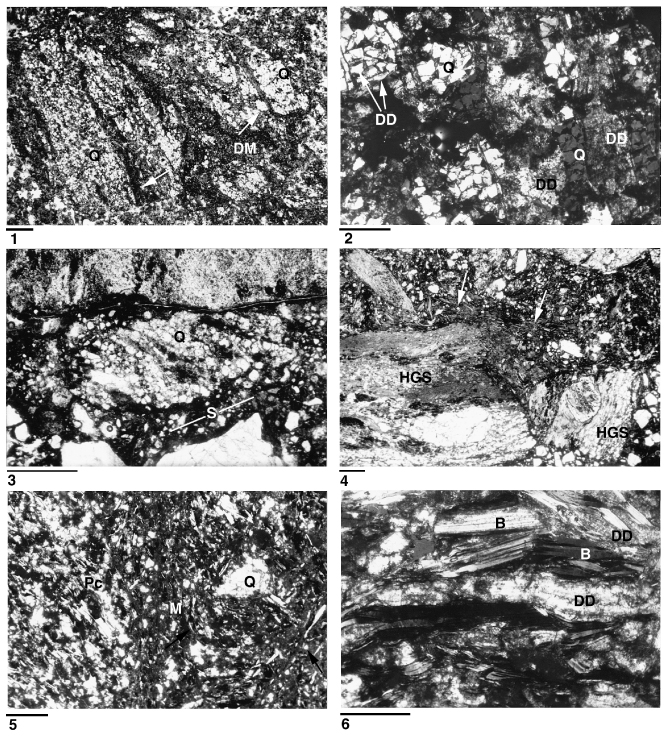Plate 4. Thin-section photomicrographs of structures in clay-rich matrix cataclastic breccias. 1. Sample 161-976B-80R-2, 1-8 cm. Breccia formed of splintered quartzite porphyroclasts (Q) in clayey dolomite-rich matrix (DM). Note widespread displacive-dolomite filling internal cracks (arrows) in porphyroclasts. Plane light. Scale bar = 1 mm. 2. Sample 161-976B-80R-2, 1-8 cm. Detail of (1) showing inner intensive fracture in splintered quartz porphyroclasts (Q) and darker bladed dolomite veins (DD). Note that displacive-dolomite (DD) also occurs between quartz fragments in splintered grains. Crossed polars. Scale bar = 100 Ám. 3. Sample 161-976B-88R-1, 17-20 cm. Cataclastic breakage of a splintered quartzite clast (Q). Note cataclastic comminute grains and cataclastic flow (S). Tails of the clast indicating the sense of shear. Plane light. Scale bar = 200 Ám. 4. Sample 161-976B-91R-1, 44-47 cm. Intensive cataclastic breakage of a garnet-bearing schist porphyroclast. Note lack of displacement between the broken halves of porphyroclast (HGS) and pronounced cataclastic flow marked by alienation of micas (arrows). Plane light. Scale bar = 1 mm. 5. Sample 161-976B-105R-1, 130-131 cm. High-turbulence cataclastic flow in breccia matrix, showing "whirlwind" arrangement of micas around a quartzite clast (Q). Note high-grade schist porphyroclast (Pc) at the left-hand side. Plane light.Scale bar = 500 Ám. 6. Sample 161-976B-106R-1, 62-66 cm. Plane light. Displacive dolomite (DD) in biotite grain (B). Scale bar = 200 Ám. Click on image for enlargement.

![]()